Hyundai Tucson vs Land Rover Discovery Sport – Which car suits you better?
Both models have their strengths – but which one suits you more?
Compare performance, efficiency, price and space directly: Hyundai Tucson or Land Rover Discovery Sport?
Costs and Efficiency:
Price and efficiency are key factors when choosing a car – and this is often where the real differences emerge.
Hyundai Tucson has a decisively advantage in terms of price – it starts at 30600 £, while the Land Rover Discovery Sport costs 46500 £. That’s a price difference of around 15823 £.
Fuel consumption also shows a difference: Hyundai Tucson manages with 1 L and is therefore significantly more efficient than the Land Rover Discovery Sport with 4.20 L. The difference is about 3.20 L per 100 km.
As for range, the Hyundai Tucson performs slightly better – achieving up to 70 km, about 12 km more than the Land Rover Discovery Sport.
Engine and Performance:
Power, torque and acceleration say a lot about how a car feels on the road. This is where you see which model delivers more driving dynamics.
When it comes to engine power, the Land Rover Discovery Sport has a slight edge – offering 269 HP compared to 252 HP. That’s roughly 17 HP more horsepower.
In acceleration from 0 to 100 km/h, the Land Rover Discovery Sport is hardly perceptible quicker – completing the sprint in 7.40 s, while the Hyundai Tucson takes 7.90 s. That’s about 0.50 s faster.
In terms of top speed, the Land Rover Discovery Sport performs hardly perceptible better – reaching 209 km/h, while the Hyundai Tucson tops out at 194 km/h. The difference is around 15 km/h.
There’s also a difference in torque: Land Rover Discovery Sport pulls noticeable stronger with 540 Nm compared to 367 Nm. That’s about 173 Nm difference.
Space and Everyday Use:
Whether family car or daily driver – which one offers more room, flexibility and comfort?
Both vehicles offer seating for 5 people.
In curb weight, Hyundai Tucson is distinct lighter – 1520 kg compared to 1949 kg. The difference is around 429 kg.
In terms of boot space, the Land Rover Discovery Sport offers noticeable more room – 780 L compared to 620 L. That’s a difference of about 160 L.
In maximum load capacity, the Hyundai Tucson performs to a small extent better – up to 1799 L, which is about 225 L more than the Land Rover Discovery Sport.
When it comes to payload, Land Rover Discovery Sport somewhat takes the win – 641 kg compared to 545 kg. That’s a difference of about 96 kg.
Who comes out on top?
Overall, the Hyundai Tucson shows itself to be outperforms in nearly all aspects and secures the title of DriveDuel Champion.
It convinces with the more balanced overall package and proves to be the more versatile choice for everyday use.
 @ hyundai.news
@ hyundai.news
Hyundai Tucson
Hyundai Tucson
The Hyundai Tucson is a standout choice in the compact SUV segment, offering a perfect blend of style, comfort, and practicality. Its modern design is complemented by a spacious interior that provides ample room for passengers and luggage alike. With advanced technology and safety features, the Tucson ensures a smooth and enjoyable driving experience.
details @ hyundai.news
@ hyundai.news
 @ hyundai.news
@ hyundai.news
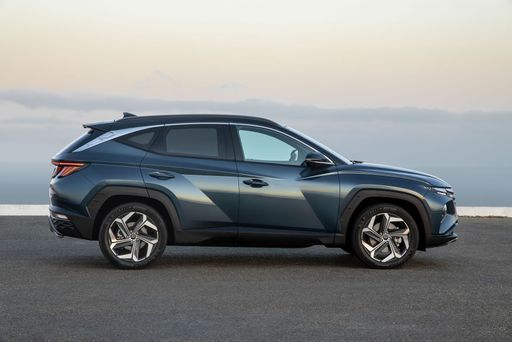 @ hyundai.news
@ hyundai.news
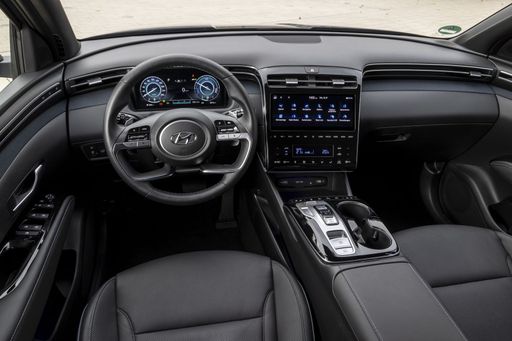 @ hyundai.news
@ hyundai.news
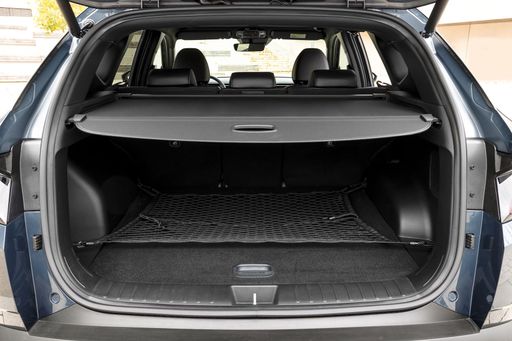 @ hyundai.news
@ hyundai.news
Land Rover Discovery Sport
The Land Rover Discovery Sport exudes a perfect blend of rugged capability and refined elegance, making it a standout in the SUV category. Its versatile interior adapts seamlessly to varying needs, while offering top-tier comfort for all passengers. Equipped with cutting-edge technology and a robust design, this vehicle is ideal for both urban adventures and off-road excursions.
details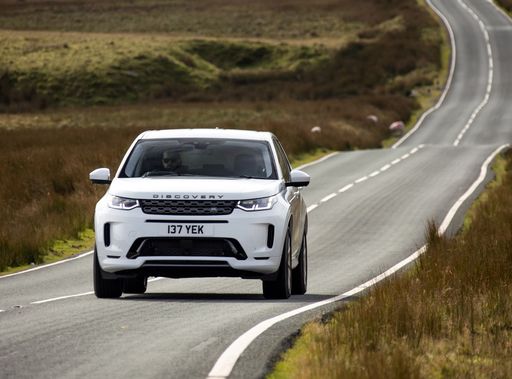 @ media.landrover.com
@ media.landrover.com
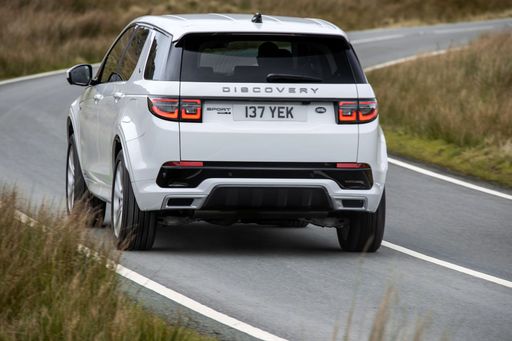 @ media.landrover.com
@ media.landrover.com
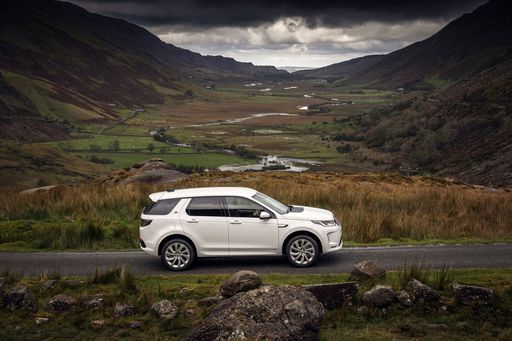 @ media.landrover.com
@ media.landrover.com
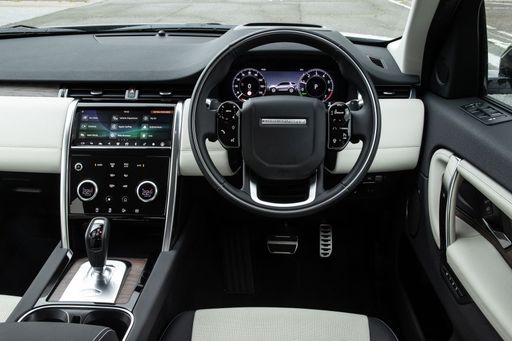 @ media.landrover.com
@ media.landrover.com
 @ hyundai.news
@ hyundai.news
|
 @ media.landrover.com
@ media.landrover.com
|
|
|
|
Costs and Consumption |
|
|---|---|
|
Price
30600 - 46300 £
|
Price
46500 - 65700 £
|
|
Consumption L/100km
1 - 6.9 L
|
Consumption L/100km
4.2 - 7.1 L
|
|
Consumption kWh/100km
-
|
Consumption kWh/100km
-
|
|
Electric Range
64 - 70 km
|
Electric Range
58 km
|
|
Battery Capacity
-
|
Battery Capacity
12 kWh
|
|
co2
22 - 156 g/km
|
co2
95 - 187 g/km
|
|
Fuel tank capacity
42 - 54 L
|
Fuel tank capacity
58 - 65 L
|
Dimensions and Body |
|
|---|---|
|
Body Type
SUV
|
Body Type
SUV
|
|
Seats
5
|
Seats
5
|
|
Doors
5
|
Doors
5
|
|
Curb weight
1520 - 1889 kg
|
Curb weight
1949 - 2168 kg
|
|
Trunk capacity
546 - 620 L
|
Trunk capacity
780 L
|
|
Length
4510 - 4520 mm
|
Length
4597 mm
|
|
Width
1865 mm
|
Width
1894 mm
|
|
Height
1650 mm
|
Height
1727 mm
|
|
Max trunk capacity
1721 - 1799 L
|
Max trunk capacity
1574 L
|
|
Payload
525 - 545 kg
|
Payload
582 - 641 kg
|
Engine and Performance |
|
|---|---|
|
Engine Type
Diesel MHEV, Petrol MHEV, Petrol, Full Hybrid, Plugin Hybrid
|
Engine Type
Diesel MHEV, Plugin Hybrid
|
|
Transmission
Automatic, Manuel
|
Transmission
Automatic
|
|
Transmission Detail
Dual-Clutch Automatic, Manual Gearbox, Automatic Gearbox
|
Transmission Detail
Automatic Gearbox
|
|
Drive Type
Front-Wheel Drive, All-Wheel Drive
|
Drive Type
All-Wheel Drive
|
|
Power HP
136 - 252 HP
|
Power HP
163 - 269 HP
|
|
Acceleration 0-100km/h
7.9 - 11.6 s
|
Acceleration 0-100km/h
7.4 - 10.2 s
|
|
Max Speed
180 - 194 km/h
|
Max Speed
190 - 209 km/h
|
|
Torque
265 - 367 Nm
|
Torque
380 - 540 Nm
|
|
Number of Cylinders
4
|
Number of Cylinders
3 - 4
|
|
Power kW
100 - 185 kW
|
Power kW
120 - 198 kW
|
|
Engine capacity
1598 cm3
|
Engine capacity
1498 - 1998 cm3
|
General |
|
|---|---|
|
Model Year
2024
|
Model Year
2025
|
|
CO2 Efficiency Class
E, F, D, B
|
CO2 Efficiency Class
G, B
|
|
Brand
Hyundai
|
Brand
Land Rover
|
What drive types are available for the Hyundai Tucson?
Available configurations include Front-Wheel Drive or All-Wheel Drive.
The prices and data displayed are estimates based on German list prices and may vary by country. This information is not legally binding.
